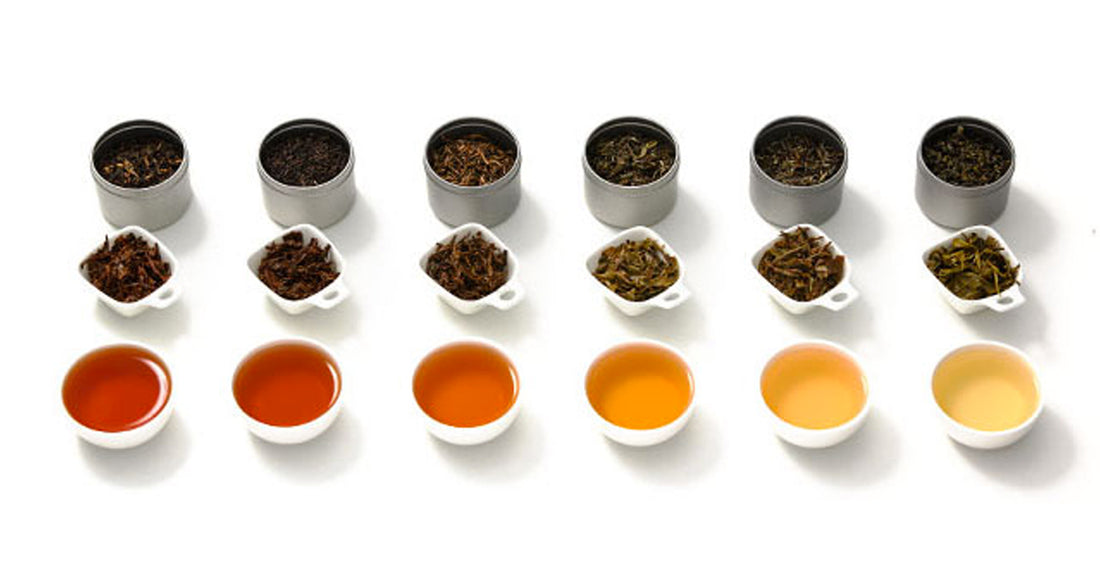
Share
A Beginner’s Guide to the Different Types of Tea
1. Introduction
- Introduction to tea as a beverage
- Brief overview of its popularity and history
2. Types of Tea
- Green Tea
- Origin and characteristics
- Health benefits
- Black Tea
- Origin and characteristics
- Health benefits
- White Tea
- Origin and characteristics
- Health benefits
- Oolong Tea
- Origin and characteristics
- Health benefits
- Herbal Teas
- Explanation and examples
- Health benefits
3. Brewing the Perfect Cup
- General tips
- Specific tips for each type of tea
4. Cultural Significance
- Tea in different cultures
- Tea ceremonies
5. Conclusion
- Recap of the types of tea and their benefits
- Encouragement to try different types of tea
6. FAQs
- What is the difference between green and black tea?
- How much caffeine is in each type of tea?
- Can tea help improve health?
- Is it easy to prepare each type of tea at home?
- Which type of tea is best for relaxation?
---
Article: A Beginner’s Guide to the Different Types of Tea
Introduction
Tea stands as one of the oldest and most beloved beverages around the globe. Its origins trace back thousands of years, and today, it is embraced in countless cultures for its soothing qualities and health benefits. In this beginner's guide, we will explore the various types of tea, each offering unique flavors and benefits.
Types of Tea
Green Tea
Hailing from both China and Japan, green tea is celebrated for its minimal processing and fresh, delicate flavor. Key components such as antioxidants make green tea a top choice for health enthusiasts. It is linked with numerous health benefits, including improved brain function and lower risk of cardiovascular disease.
Black Tea
Known for its robust flavor, black tea undergoes a full oxidation process that contributes to its dark color and rich taste. Popular in the West, black tea is often enjoyed with a splash of milk or a slice of lemon. It possesses antioxidants that may reduce inflammation and enhance heart health.
White Tea
Considered the purest among all teas, white tea is harvested while the plant is still young, and its buds are covered in fine white hairs. It has a light, delicate flavor profile and fewer processed traits, making it a subtle yet highly revered option. Rich in antioxidants, white tea offers benefits such as cancer prevention and improved skin health.
Oolong Tea
A traditional Chinese tea, Oolong offers a complexity of flavor that varies widely depending on the degree of fermentation. It can range from sweet and fruity to thick and woody. Oolong tea is praised for its metabolism-boosting properties and can aid in weight management.
Herbal Teas
Unlike traditional teas from the Camellia sinensis plant, herbal teas consist of a variety of dried herbs, spices, and flowers. Popular choices include chamomile, mint, and hibiscus, each known for unique medicinal qualities such as calming nerves or anti-inflammatory properties.
Brewing the Perfect Cup
Achieving the perfect cup of tea is an art that varies from one type to another. Generally, using fresh, filtered water and paying attention to steeping times and temperatures can make a significant difference. For green tea, cooler temperatures and shorter steeping times preserve the delicate flavors. In contrast, black tea thrives with higher temperatures and longer steeping periods.
Cultural Significance
Tea is more than just a drink; it's a part of daily rituals and ceremonies world over. In Japan, the tea ceremony ("chanoyu") offers a meditative and spiritual experience, while in Britain, afternoon tea holds a place as a social, relaxing event. Exploring tea is to discover global cultures and histories enmeshed in every sip.
Conclusion
Exploring the world of tea opens up a spectrum of flavors, aromas, and traditions. From the powerful black tea to the subtle white tea and aromatic herbal infusions, there's a type of tea suited to every taste and occasion. We encourage you to explore these varieties and find your favorite brew.
FAQs
What is the difference between green and black tea?
Green tea is less processed and not oxidized, which keeps it light in color and flavor, whereas black tea is fully oxidized, giving it a richer flavor and darker color.
How much caffeine is in each type of tea?
The caffeine content varies, with black tea generally containing the most, followed by oolong, green, and white teas. Herbal teas usually have no caffeine.
Can tea help improve health?
Absolutely. Tea contains antioxidants and other nutrients that can contribute to better health, including heart health, skin quality, and decreased inflammation.
Is it easy to prepare each type of tea at home?
Yes, brewing tea at home is straightforward. The key is to know the right water temperature and steeping time for each type of tea.
Which type of tea is best for relaxation?
Herbal teas, such as chamomile or mint, are renowned for their calming effects and are excellent for relaxation.


